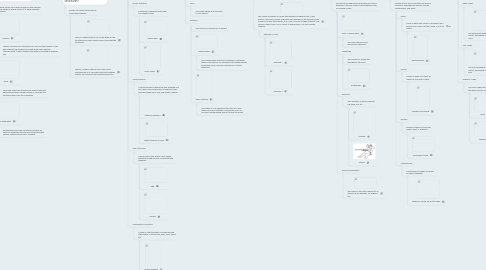
1. How can structures support loads?
1.1. The Falkirk Wheel can support the loads of cargo boats in gondolas. Boats go into the upper gondola while an equal amount of weight is lifted on the other gondola. So, equal weights make the wheel work easier.
1.2. The Tokyo Skytree has a base that is similar to a tripod, which can be used to support a lot of weight as its positioning can resist force.
2. How can external forces effect structures?
2.1. External forces can create stresses in the material of the building, which causes it to have damages or failures.
2.2. Gravity
2.2.1. Gravity can affect on structures as COG and the stability. It can help support the building as gravity pulls down objects towards Earth. It helps support the loads by pushing it upwards too.
2.3. Wind
2.3.1. Wind can affect the structure by either creating a horizontal pressure called racking or can slide the structure away from its foundation.
2.4. Earthquakes
2.4.1. Earthquakes can make structures collapse as they can shake the ground and move the plates around, causing structure to collapse.
3. How does external forces affect internal forces on the structures?
3.1. Forces can effect structures by losing their stability.
3.1.1. Wind, an external force can cause shear to the structures and can possibly bend and break the structures.
3.1.2. Gravity, another external force can cause compression as it can press particles together. Gravity can also push the particles apart too.
4. Types of Structures
4.1. Frame Structure
4.1.1. A network of different parts that can support loads
4.1.1.1. Spider web
4.1.1.2. Eiffel Tower
4.2. Solid Structure
4.2.1. A structure with a large mass and strength and also uses solid construction to support loads. Typically made up of only one sturdy material.
4.2.1.1. Athena Parthenon
4.2.1.2. Great Pyramids of Giza
4.3. Shell Structure
4.3.1. A hollow structure with a curvy shape providing a high amount of strength and rigidness.
4.3.1.1. Egg
4.3.1.2. Helmet
4.4. Combination Structure
4.4.1. A type of structure that is combined with other types of structures, shell, solid, frame etc.
4.4.1.1. Human skeleton
4.4.1.2. A house
5. Form and Function
5.1. Form
5.1.1. The visible shape and structure of any object.
5.2. Function
5.2.1. The activity or purpose of an object.
5.2.2. Falkirk Wheel
5.2.2.1. This combination structure comprises of different types of structures. It's purpose is to transport boats to another canal. And also provides as a tourist attraction.
5.2.3. Tokyo Skytree
5.2.3.1. This tower is a combination structure as it was made up of diff. materials. It's purpose is for TV and radio broadcasting and for tourist attraction.
6. Center of Gravity
6.1. The center of gravity is usually the heaviest or biggest part of the object. The body's center of gravity also changes as the person moves. A high COG has less stability, but a low COG has a higher stability. The reason is that a low COG is closer to the ground, so it has a higher stability.
6.1.1. Example of COG
6.1.1.1. Example 1
6.1.1.2. Example 2
7. Applying Forces
7.1. Forces the are applied are push and pull forces. Examples could be a tennis racket hitting a ball, or pushing a chair.
7.1.1. Point of Application
7.1.1.1. The area where force is specifically applied to.
7.1.2. Magnitude
7.1.2.1. The amount of speed and strength of the force.
7.1.2.2. Earthquake
7.1.3. Direction
7.1.3.1. The direction of the movement e.g. push, pull etc
7.1.3.1.1. Pushing
7.1.3.1.2. Pulling
7.1.4. Plane of Application
7.1.4.1. The angle of the force applied to an object e.g. 90 degrees, 45 degress etc
8. Internal Forces
8.1. Internal forces are forces that act inside a structure. Examples are tension, torsion, compression, and shear
8.1.1. Shear
8.1.1.1. Shear is when two forces in an object are a push or pull. Shear can tear, bend, or cut an object .
8.1.1.1.1. Ripping paper
8.1.2. Torsion
8.1.2.1. Torsion is when you twist an object by one end or both.
8.1.2.1.1. Twisting something
8.1.3. Tension
8.1.3.1. Tension is when you pull the object apart or stretch it.
8.1.3.1.1. Pulling apart rope
8.1.4. Compression
8.1.4.1. Compression is when you press an object together .
8.1.4.1.1. Pushing a spring from both ends
9. Loads
9.1. Dead Loads
9.1.1. The permanent weight of an object, the weight of the object itself.
9.2. Live Loads
9.2.1. The not permanent weight of a object, the weight of something else
9.3. Dynamic Loads
9.3.1. The force other than gravity like the push and pull forces.
9.3.1.1. Wind
9.3.1.2. Tsunami
10. External Forces
10.1. Applied or contact forces are external forces, an example might be an earthquake. Gravity, friction and normal forces are also external forces.
10.1.1. Gravity
